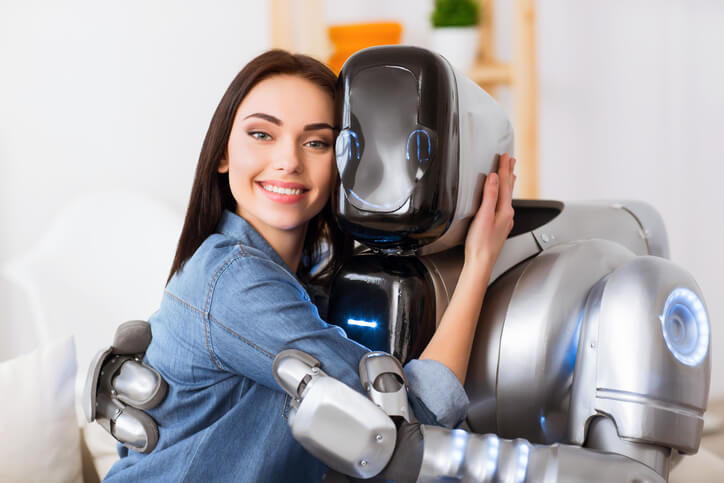Robotic health and associated AI has been in the news for a long time. Robots have been designed to take on the role of a nurse, caregivers, etc. But, society is not quite ready to accept this form of technology as it challenges its preconceived notion of ethical and cultural values. This article throws light on the factors affecting social acceptance of robotic health.
Technology design and experience depends extensively on human society and its acceptance. For example, the introduction of Genetically Modified crops (GM crops) or Artificial Insemination were not well received in human society during its advent and faced intense protests regarding ethical issues and cultural values. However, the social acceptance after its introduction over decades marked rapid adoption throughout various parts of the world. Given that the use of personal robots may be expected to become a part of people’s everyday lives, that underlying technologies, such as robots, may not be as readily accepted as incremental technology, factors to increase adoption, and acceptance is critical. The future is defined by current societal acceptance and promotion of recent scientific developments and advancements.
| Recommended for you | |
| Robots in medicine | |
| Key medical robots manufacturers | |
| Robots in elderly health care |
Take, for example, ingestible robots for surgery. This little miracle will have been impossible if the very concept of robotic health is not conceivable in particular parts of the society. Aimed for targeted drug delivery, micro surgery in remote areas of the body, and cancer treatment, ingestible robots have witnessed significant investments in the present decade. Nevertheless, Artificial Intelligence and Cyborgs have taken the world by storm, and it is not stopping.
Although not particularly in AI, several models have been devised in the past to understand other forms of technology, like Technology Acceptance Model, the Unified Theory of Acceptance and Use of Technology Model and the Chain Model. These models provide essential information to identify various variables that contribute to user acceptance.
Factors affecting social acceptance of robotic health
- Robot function: Robotic autonomy plays a key role in this case. From humanoid robots assisting mentally impaired adults to carry out simple tasks to cyborg bionic lenses with nearly complete human control, autonomy is an important factor contributing to social acceptance. Monitoring and interface issues, the ease of use, and user preferences are equally important. The combination of the complexity of the environment, the difficulty of the task, and the nature of human interaction may require a robotic system to demonstrate a particular level of autonomy to function proficiently. This is decided by the freedom of a robot. A personal robot might need the higher input of autonomy compared to a factory robot. Nursebots are used for healthcare for people needing physical assistance, like those who have the congenital disability or a persistent (e.g., loss of a limb) /temporary (e.g., a broken arm) injury. Some substantial assistance is also imposed due to aging. In general, people often employ services of informal or professional caregivers, which will undoubtedly decline with the advent of humanoid robots carrying out the similar job with greater accuracy and efficiency. Control and interface forms baseline of Human-Robot Interaction (HRI). Telepresence, laser pointing, speaker, gesture recognition, direct physical interfaces are some of the important ways of HRI. It is seen that older adults have expressed a preference for speech control of a robot, yet speech recognition software has limitations in understanding and interpreting language. However, this can pose a problem in the case of assistant robots which is helping out a victim during a stroke (who possesses little to no ability of coherent language disposition during an attack, which a robot might be unable to comprehend).
- Robot-human capability: Social intelligence, emotion expression, and nonverbal social cues play a deciding role to gauge robot’s social ability. A mismatch between the users’ expectations and the actual social intelligence of the robot may negatively impact acceptance and use of the robot. As Picard said, “Computers do not need sufficient abilities for the fanciful goal of becoming humanoids; they need them for a meeker and more practical purpose: to function with intelligence and sensitivity toward humans.” Emotional expression, believability, and recognition decide its culpability in the market. Non-verbal cues like nodding in agreement, shaking head to disagree, shifting weight, eye movement, blinking, and eye-tracking are indispensable for assistant robots.
- Robot Appearance: A humanoid appearance, structure, form, gender appearance generate the wave of responses. Whether it’s human like, animal-like, or machine like in appearance (or even have a toy appearance which is quite popular for children under ten). For example, machine-like robots for surgeries is excellent, but you don’t want a machine like robots for household chores. Another example would be prosthetic hands, which lately is so lifelike that it’s only the lack of temperature which gives it away.
The psychological reactions evoked in humans can make people decide about the future steps regarding acceptance. There are three dimensions of acceptance: interaction with robots, social influence of robots, and emotional interactions with robots. It has been found by a study by Bartneck, Nomura, Kanda, Suzuki, and Kato that Japanese individuals may have more negative attitudes toward robots than Chinese or Dutch. Similarly, in a rather different study, female participants have less negative attitudes toward robots as compared to male members. Researchers have also attempted to examine people’s reactions toward a realistic looking robot relative to an actual human. For Japanese android named Geminoid H1-1 (replica of Hiroshi Ishiguro), the likeability is not that different between human and AI on individuals participating in the survey. Research has also shown a human tendency to humanize machine-like robots. Media exposure is also known to influence or seed a preconceived notion about a particular robot.
Finally, any mismatches between user expectations and a robot’s actual capability, however, would be expected to impact acceptance negatively. It is still walking a fragile line (with some even wondering whether we can be immortal by replacing our body with metal!) between open arms and outright disagreement, yet, AI and robots have undoubtedly paved the way for Gen-Y.
Image credit: www.istockphoto.com

















